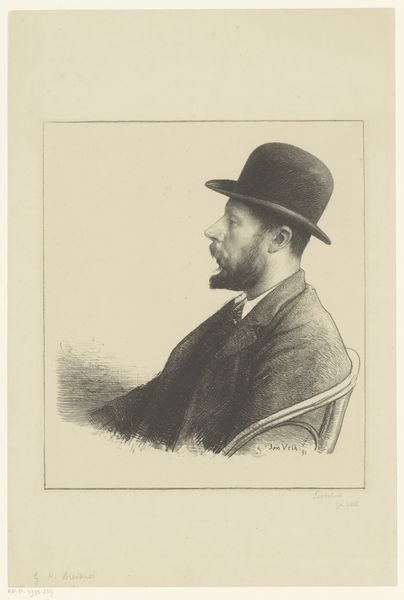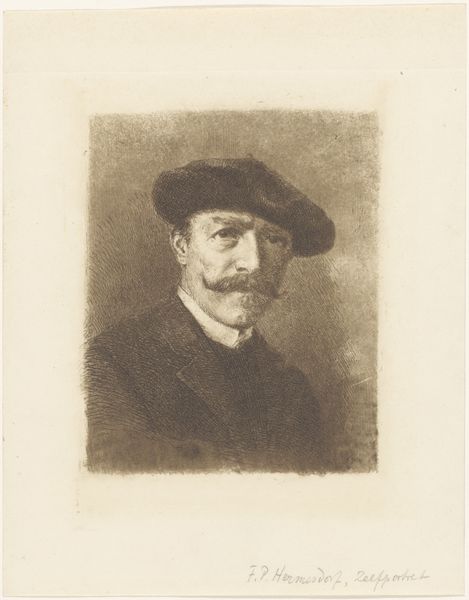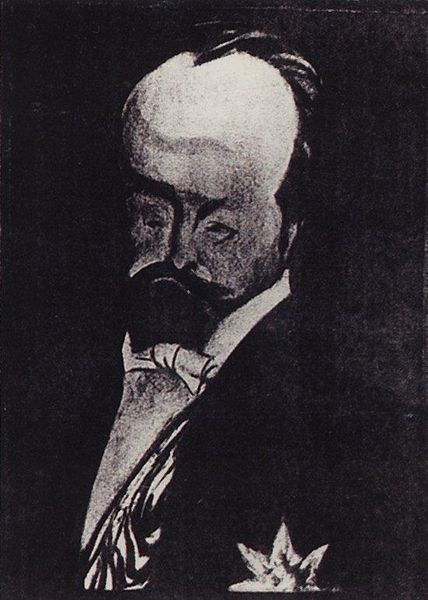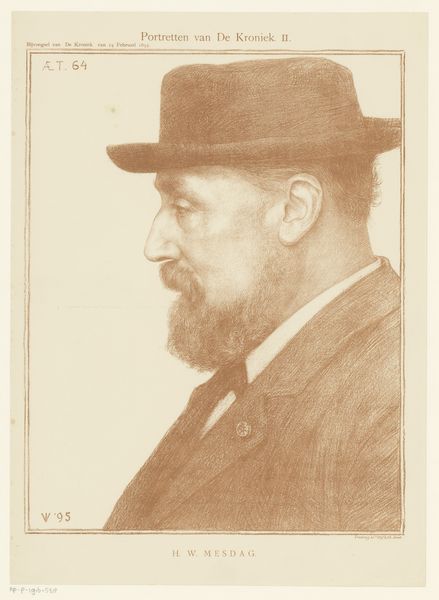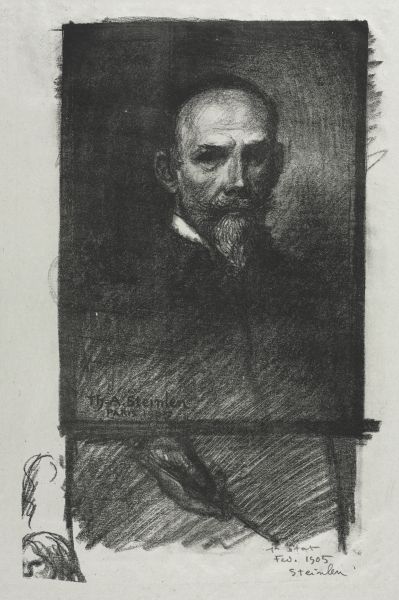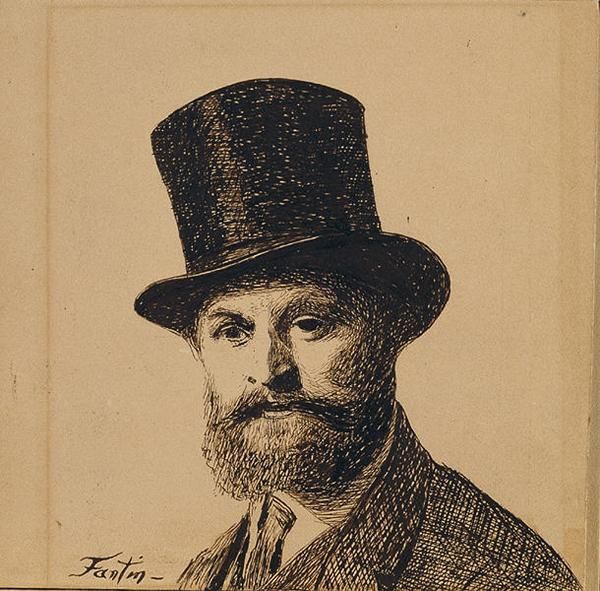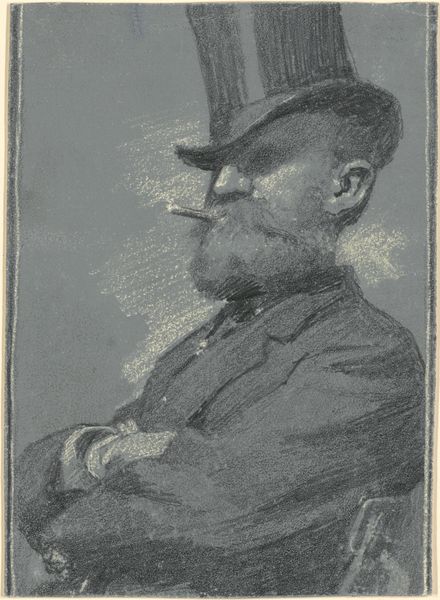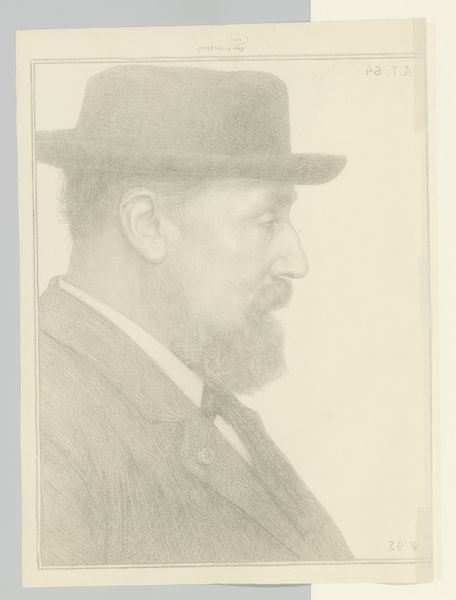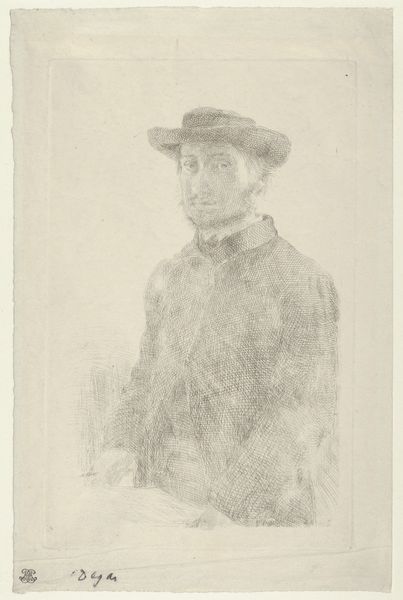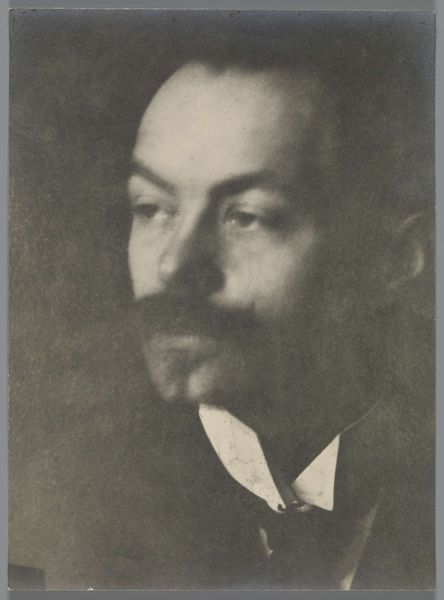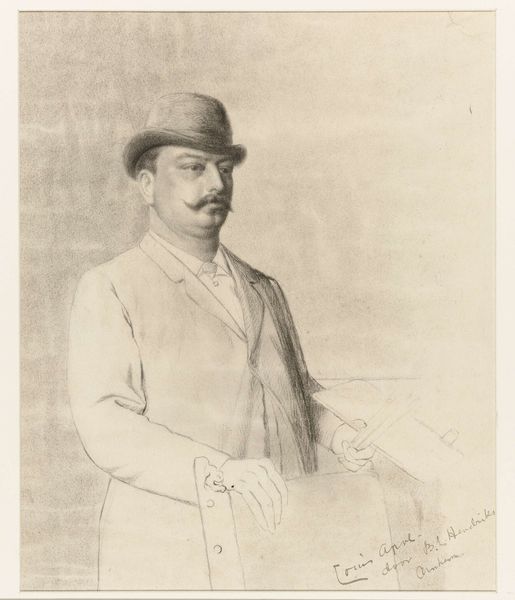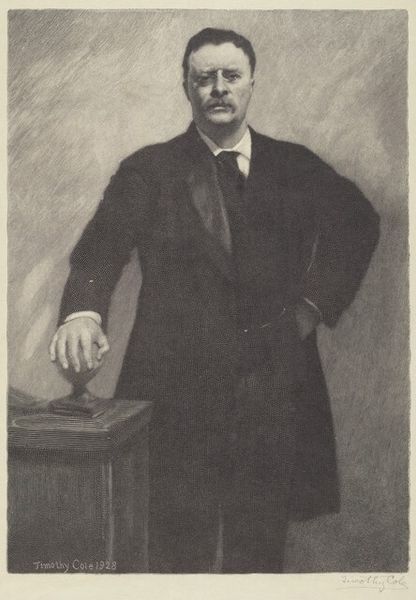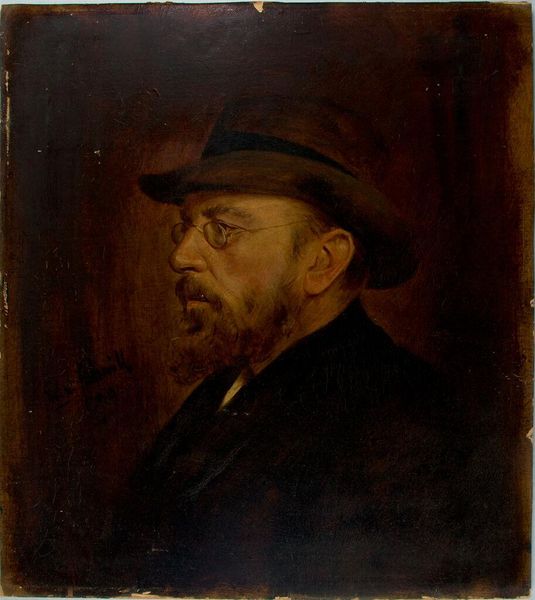
Copyright: Public domain
Editor: Here we have Charles Angrand's "Self-Portrait," created in 1892, using graphite. It strikes me as quite somber, even ghostly, with the artist fading into a dark background. What do you see in this piece, and how does it relate to the broader social context? Curator: Angrand's self-portrait speaks volumes about identity and the male gaze in late 19th-century Paris. The almost photographic rendering, while actually a drawing, challenges the artifice often found in painted portraits of the time. The sombre tones and the artist's introspective gaze create an interesting tension. Can we consider this as a critique of the established bourgeois portrait tradition? Editor: That's a fascinating thought! Could his use of graphite, a less formal medium than oil paint, also be seen as a deliberate choice to distance himself from the traditional elite? Curator: Absolutely. Think about the burgeoning social and political movements happening at that time. The Impressionists were already challenging academic norms, and Angrand, though more aligned with Neo-Impressionism in his other works, may be using this self-portrait to subtly question societal expectations of artistic representation and self-image. It reflects how artists negotiated their identities within those turbulent times. Do you think the use of light plays a part? Editor: Yes, the way the light catches his face, almost emerging from the darkness, seems to symbolize the artist's desire to be seen and acknowledged, but also to retain a sense of mystery. It makes me wonder about the performance of masculinity in that era. Curator: Precisely! It prompts a critical examination of the artist's self-construction and how he positions himself within the art world and broader social landscape of 1890s France. Hopefully that makes you see more of the picture? Editor: I do! Now it's clear it's much more than just a self-portrait; it's a window into the artist's identity and social commentary. Curator: It's amazing how considering those intersectional narratives and power dynamics transforms the piece!
Comments
No comments
Be the first to comment and join the conversation on the ultimate creative platform.
